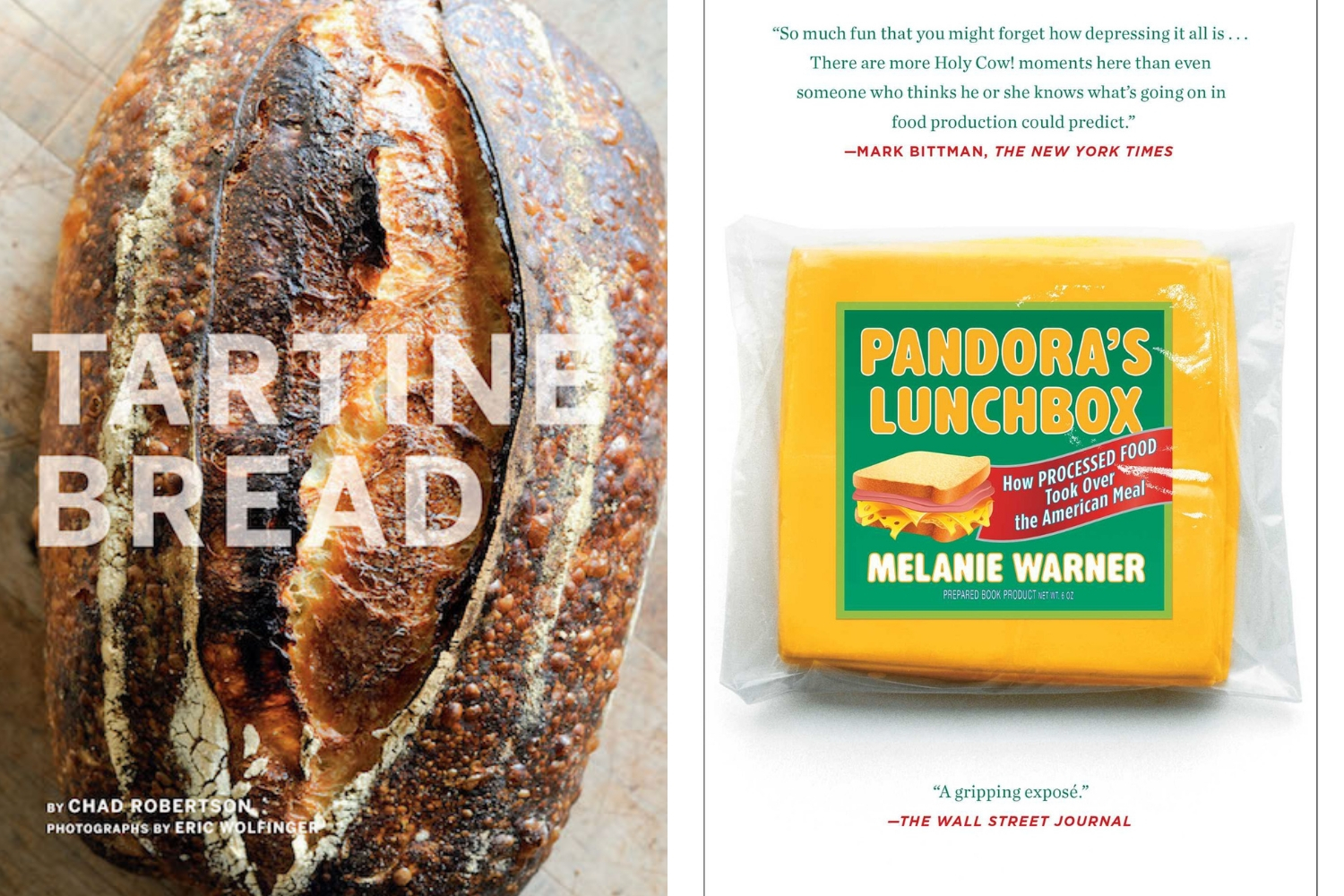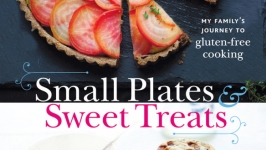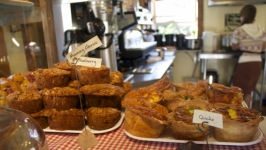Tartine Bread and Pandora's Lunchbox
Tartine Bread by Chad Robertson
My Tartine Bread adventure began while staying with a so-called “passionate evangelist in the kitchen” friend, who stayed up into the wee-hours of the night waiting for his loaves of golden raisin, fennel seed and orange zest bread to progress through the bulk fermentation stage. After that, he still needed to shape, rest, and shape the loaves again, after which the bread had to rise again for 3-12 hours. I never witnessed the whole process, but his bread blew my mind. I was converted.
Do not attempt your first loaves until you can budget a quiet two hours to study the first 69 pages of Tartine Bread, the bible of bread books. Twenty-four pages are dedicated to the basic country loaf, how to make a sourdough starter, step-by-step images of the entire process, and charts with exact measurements. The next 10 pages feature an in-depth discussion about the country loaf, followed by experiential tales of three “test baker” disciples.
Listen to the expert—Chad Robertson is a bread-making god—and obtain all the recommended tools to ensure your bread-baking journey will be more joyful. I still do not have a thermometer to measure the temperature of the water; I do a finger-dipping test. This has, undoubtedly, led to some of my challenges. Still, after five false starts on the “float test,”—put a spoonful of starter into some water and if it floats, it's ready—my first loaves of bread were unbelievably amazing. They looked heavenly, with perfect crust, interior air pockets, and moisture.
Through winter, my fireplace heated my leaven, which helped me get into a groove and empowered me to experiment with some of the country loaf variations, like toasted sesame, and to expand into the semolina/whole wheat sections, which gave birth to my favorite loaves: one with bourbon-soaked raisins, another with toasted and ground cardamom pods and yet another with grapefruit zest. Unfortunately, spring weather caused my in-home temperatures to fluctuate and I struggled with the leaven. By summer, my evangelist bread friend reestablished faith in my abilities—I was being too precise. I needed to know the dough… My bread was born again.
This inspiring book by James Beard winner Robertson is not for the novice baker. It’s designed for the epicurean, the chemist and anyone with well-traveled taste buds who desires an epic journey into breadmaking.
Pandora's Lunchbox by Melanie Warner
After reading Melanie Warner’s Pandora’s Lunchbox, you come away with sense of purpose when entering the grocery store or market. Even at Whole Foods or the Boise Co-op, avoid the center aisles. Subtitled “How Processed Food Took Over the American Meal,” Warner’s book began with a simple question: how long do processed foods—which account for 70 percent of our calories—last? She tested cereals, cheeses, and deli foods. A guacamole containing mystery ingredients like amigum and text-instant was a launching point.
Her self-study of “immortal” foods led her to ask why and how processed foods have gained such a stranglehold on the American diet. Warner’s home food museum was “nauseous” but telltale. When cheese products can last for years, something is amiss. She reports in a dryly ironic style that our diets have been altered more in the past ten decades then in the previous 10,000 years—and not for the better. The numbers are numbing: 5,000 food additives (more than half flavorings) and another 3,750 “food contact substances” never intended to “migrate into our food.” Warner describes 28 million boxes of Kellogg cereals recalled in 2010 because of chemicals used in the waxed bags.
She also demystifies Subway’s Eat Fresh campaign, noting that its Sweet Onion Chicken Teriyaki sandwich includes 105 ingredients, 55 of which are “dry dusty substances” that ensure the sandwich weighs in at only 4.5 grams of fat.
Manufactured foods have a different set of demands than fresh foods: products must taste good, have a long shelf life and quickly respond to consumer trends like “gluten-free” and “reduced fat.” Warner’s wide-angle reporting includes revelations about soy, hotdogs, Lunchables, flavorings and a chapter on social issues like obesity. Though Warner, a biscotti lover whose kids love chicken tenders, recognizes the “salty and sugary allure of processed foods,” her well-researched book might just convince you to resist temptation.
Tartine Bread
Pandora's Lunchbox
Melanie Warner | @melanie_warner
Boise Co-op | @boisecoop







